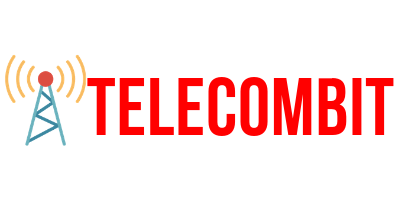7 Popular Subscription Pricing Models

How much is your content worth?
Whether you write for an online publication or blog, your content is the core of your business model. It draws in your readership and gives you a voice, so it makes sense to charge for it.
The question is, how do you price and monetize your industry-leading content? Charging for subscriptions is an easy way to start, but many different subscription pricing options exist.
Let’s look at popular subscription pricing models and find which ones might be right for your content.
1. Flat-Rate Subscription
Flat-rate subscription plans have become very popular in the digital entertainment business, with Netflix, Amazon Prime Video, and Spotify leading the way. Customers pay a fixed monthly fee to use these services, giving them access to all their material.
This plan is appealing because it is simple and easy to understand for both customers and providers. Subscribers know how much they’ll pay each month, and providers get a steady stream of recurring income.
2. Tiered Subscription
Tiered subscription plans are a flexible way to meet the needs of a wide range of customers. This approach allows businesses to effectively address various customer needs and budgets, making it easier for customers to choose the plan that aligns with their requirements for recurring subscriptions. By offering different levels of subscriptions, businesses can meet the wants and budgets of a wide range of customers.
Think about software-as-a-service (SaaS) companies like Adobe, which has plans like Photography, All Apps, and a Single App for its Adobe Creative Cloud. Each tier has a different set of software apps and features that small and big businesses can use. With this pricing approach, customers are more likely to start with a basic plan and upgrade as their needs change. This creates opportunities for upselling and more money for the business.
3. Usage-Based Subscription
Most subscription models in the cloud computing business are based on how much you use them. Amazon Web Services (AWS) and Google Cloud Platform (GCP) are good examples of this. With this plan, customers pay for their computing power, storage space, or data transfer. Businesses like this pay-as-you-go method because it gives them freedom and saves them money.
Customers can change how much they use based on what they need, and they only pay for what they use. However, it can be hard for customers to keep track of and predict costs since sudden spikes in usage can lead to higher bills. To deal with this, cloud companies often offer tools to keep track of costs and make budgets.
4. Freemium Model
The freemium approach has become how priced apps, software, and online subscription services are. It lets companies get a lot of users by giving away a basic version of their product for free while keeping the more advanced features or premium material for paying subscribers. This model has worked well for companies like Dropbox, which offers free cloud storage with the opportunity to upgrade for more space and features.
The freemium model makes it easy for people to try out a product without making a long-term investment. Once users see how useful it is, they are more likely to think about paying for a paid subscription to get more features or material.
But when making their freemium offerings, companies must find a good balance. The free version should give users real value and make them want more, and the paid features should be good enough to turn free users into paying customers.
5. Perpetual License with Maintenance Subscription
Enterprise software usually uses a perpetual license with a maintenance subscription plan. Under this plan, customers buy a software license upfront that lets them use the software for as long as they want. However, they can sign up for a maintenance plan, usually billed annually, for ongoing help, updates, and new features. This plan gives businesses a steady source of income from maintenance subscriptions while giving customers the freedom to choose whether or not they want to keep paying for support and updates.
Also Read: Construction Efficiency
6. Content or Media Bundles
Content or media packages are a common way for telecommunications and cable TV providers to set subscription prices. These companies put together packages of different services, like TV programs, Internet access, and phone services, for which you pay a single monthly fee. By bundling services, providers can draw customers who want to save time and money by getting multiple services from the same company.
Customers can often mix and match the services in these packages to get the best fit for their needs. For example, a customer might choose a deal that includes high-speed internet, a premium TV package, and unlimited calling. Bundling not only makes it easier for customers to pay their bills but also makes customers less likely to switch providers because it’s harder for them to do so when they have a deal.
7. Box Subscription
Traditional retail has been changed by box subscription models, which regularly send customers a range of physical goods. This subscription pricing plan has been used by businesses in many different fields, from beauty (Birchbox) to gourmet food (Blue Apron) to pet supplies (BarkBox).
Customers sign up for a subscription membership, and every month or three months, they get a box with new and interesting goods that fit the theme or category they selected. This plan works because subscribers are excited to discover what’s in each box. Box subscriptions keep customers coming back because it’s fun to open the box and easy to have things sent right to their door.
Unlock Value With Diverse Subscription Pricing Models
Subscription pricing models provide a great opportunity for businesses to generate recurring revenue and capitalize on customer loyalty. To determine the most effective pricing model for your business, weigh the pros and cons of each and consider customer feedback.
All in all, it’s important that you make an informed decision for the best outcome. Try out different models and find the perfect one to satisfy your business goals!
Was this article helpful to you? If so, make sure to check out our blog for more useful information and resources.





